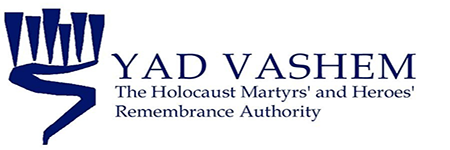We recently had the privilege of facilitating the "Holocaust Memory in the Age of Artificial Intelligence" conference, a vital gathering of over 100 participants from 6 different countries. While the topic itself was profound, we wanted to ensure the virtual format didn't hinder meaningful interaction and personalized engagement. The answer? Strategically implemented engaging sessions in Breakout Rooms, powered by the intuitive features of Togeder. This approach was key to transforming the virtual space into an interactive environment for meaningful exchange.
Instead of a purely lecture-based experience, the conference was structured to include 30 minutes for smaller group discussions within Breakout Rooms. This allowed participants to delve deeper into the different opinions of using AI to preserve the Holocaust memory, fostering a sense of relevance and encouraging active contributions that might not have been possible in a large plenary session.
The beauty of these engaging sessions in Breakout Rooms, especially when facilitated by a platform like Togeder, was the ability to create a more intimate and personalized environment. Attendees felt more comfortable sharing their unique perspectives and engaging in nuanced dialogue with a focused group of peers. This smaller setting naturally encouraged more interaction and allowed for a more tailored exploration of ideas.
Togeder's platform not only enabled these engaging sessions in Breakout Rooms but also empowered our facilitators to actively guide the discussions. This was especially critical when only two facilitators were in place, with an audience of 100 participants. With Togeder, facilitators monitored the activity in each room, identified when conversations needed a nudge, and provided timely prompts to deepen the exploration of topics. For instance, when a group appeared to have exhausted their initial discussion after analyzing one example story, the facilitator could encourage them to revisit an earlier example and consider if their opinions remained consistent, pushing for a more comprehensive analysis.
In another instance, the platform's alert system indicated that two rooms had low activity levels. The facilitator was able to seamlessly merge these two rooms, instantly creating a more dynamic and engaging discussion for the participants involved. This demonstrates the power of technology to facilitate real-time adjustments and optimize the flow of the conference.
Furthermore, Togeder provided an invaluable detailed report, when participants came back to the main meeting: the host reviewed an AI-powered report provided by Togeder, summarizing the key discussion points from each Breakout Room. This report, generated within minutes of the sessions ending, offered a tangible record of the conversations and was shared with participants during the conference's concluding remarks, highlighting the variety of opinions in the discussion. This immediate feedback loop added another layer of value to the engaging sessions in Breakout Rooms, providing attendees with concrete takeaways and facilitating further reflection.
The feedback from the "Holocaust Memory in the Age of Artificial Intelligence" conference overwhelmingly highlighted the positive impact of these smaller, focused discussions. Attendees specifically mentioned the value of connecting with peers on a more personal level and the richness of the conversations that emerged from the engaging sessions in Breakout Rooms.
Our experience at this conference underscores the power of intentionally designed Breakout Rooms in virtual events. They are not just about dividing participants; they are about creating focused spaces for meaningful dialogue, personalized interaction, and ultimately, a more engaging and impactful conference experience. The Togeder platform can significantly enhance this process, offering tools for monitoring and summarizing discussions, further enriching the overall event.

